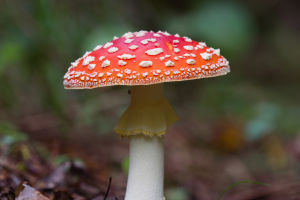Cosmos, a popular ornamental plant, is renowned for its vibrant and beautiful flowers, often gracing gardens, parks, and various festivals.
This plant is not only cherished for its striking appearance but also symbolizes harmony and balance in many cultures.
Origin and Distribution of Cosmos
Native to Mexico and Central America, Cosmos was introduced to Europe in the 17th century. Its robust adaptability to diverse environments facilitated its rapid spread across the globe, making it a common feature in gardens worldwide.
The name "Cosmos" is derived from the Greek word meaning "harmony" or "order," reflecting the symmetrical shape and colorful appearance of its flowers.
Botanical Characteristics of Cosmos
Belonging to the Asteraceae family, Cosmos is an annual herb. It typically grows to a height of 30 to 120 cm, with pinnately divided, slender leaves.
The flowers, measuring about 5 to 10 cm in diameter, have tongue-shaped petals and a central yellow or orange disc. The colors are rich and varied, including white, pink, red, and purple.
Cosmos has a long flowering period, extending from summer to autumn. It has low soil requirements and can thrive in poor soil. While it prefers sunny environments, it can also tolerate some drought. These characteristics make Cosmos easy to cultivate and widely adaptable.
How to Cultivate Cosmos
Cultivating Cosmos is relatively simple, making it suitable for novice gardeners. Here are some key cultivation steps:
1. Sowing
Cosmos can be propagated by sowing. Generally, sowing is carried out in spring. Choose loose, well-drained soil, and evenly spread the seeds on the soil surface. Cover the seeds lightly and keep the soil moist. Under suitable temperature conditions, seeds usually germinate within 7 to 10 days.
2. Light and Temperature
Cosmos thrives in sunlight and needs to be planted in a sunny location. Although it can tolerate partial shade, sufficient sunlight promotes better growth and flowering. Additionally, Cosmos is highly adaptable to temperature, with the most suitable growth range being 15 to 25 degrees Celsius.
3. Watering and Fertilization
Cosmos is drought-resistant, but moderate watering during the growth period is necessary to keep the soil moist but not waterlogged. After sowing and before flowering, applying some organic fertilizers can promote the growth and flowering of the plants.
4. Pest and Disease Control
Cosmos has relatively few pests and diseases, but it can occasionally be attacked by aphids or suffer from leaf spots. These issues can be controlled by spraying soapy water or biological pesticides. Moreover, maintaining good ventilation and appropriate planting density helps reduce the occurrence of pests and diseases.
Cultural Symbolism of Cosmos
Cosmos is not only loved for its beautiful appearance but also holds significant symbolic meanings in various cultures.
1. Symbol of Harmony and Beauty
As its name suggests, Cosmos, meaning "harmony" or "order" in Greek, carries this symbolic meaning forward in many cultures. It is often used as a symbol of a harmonious and beautiful life, featuring prominently in various celebrations and festivals.
2. Friendship and Love
The flower language of Cosmos varies across cultures, but it is generally considered to symbolize friendship and love. Its bright colors and long flowering period symbolize the beauty and durability of friendship.
In Japan, Cosmos, known as "autumn cherry," represents innocence and nobility and is widely used to express good wishes for friends.
3. Bravery and Strength
Cosmos is known for its strong vitality and wide adaptability. It is resilient, thriving even in poor soil and harsh environments, symbolizing bravery and strength. This spirit inspires people to remain optimistic in adversity and to pursue a better life.
Conclusion
Cosmos, with its bright colors and graceful posture, adds infinite beauty and vitality to gardens and people’s lives worldwide. Its easy cultivation and rich cultural symbolism make it a plant that is both simple to grow and full of meaning.
In the future, Cosmos will continue to decorate our lives with its unique charm and convey the message of beauty and harmony.
Whether you are an experienced gardener or a novice, incorporating Cosmos into your garden can bring a touch of elegance and a reminder of the enduring values of harmony, love, and resilience.


